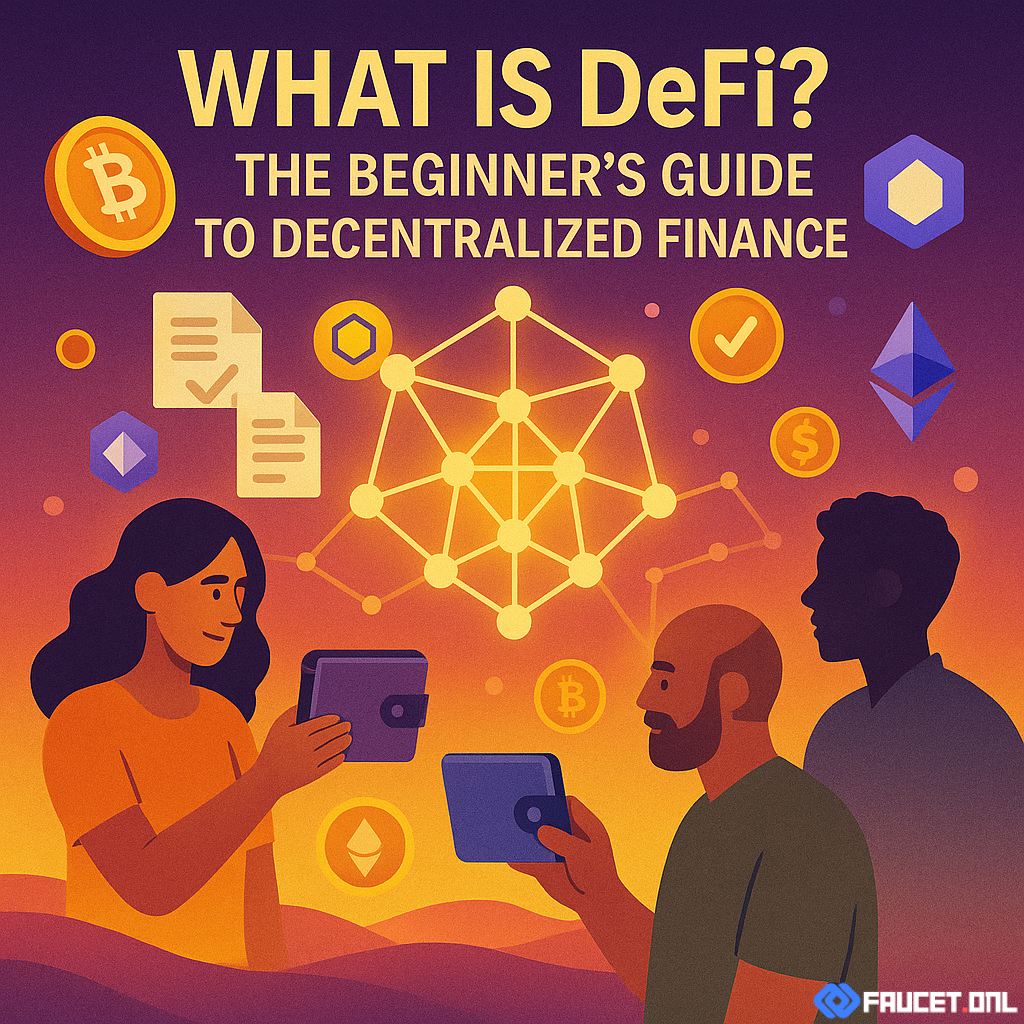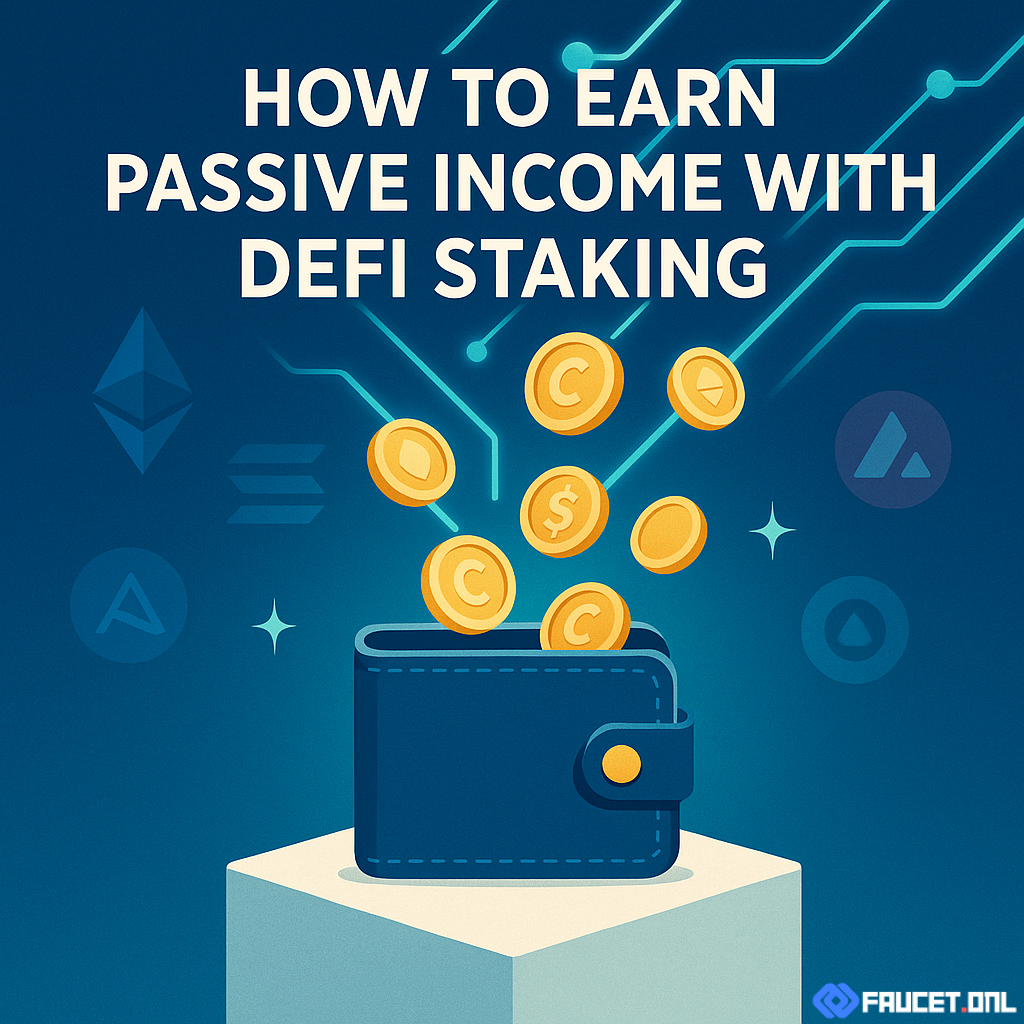What’s DeFi?
DeFi, short for Decentralized Finance, is a fast-growing sector of the cryptocurrency world. Unlike traditional finance, where banks and centralized companies control the flow of money, DeFi operates on public blockchains like Ethereum and Solana. These systems use smart contracts—self-executing code that runs exactly as programmed—to replace middlemen, automate financial operations, and create an open financial ecosystem.
With DeFi, anyone with an internet connection can access lending, borrowing, trading, insurance, and more. There are no credit checks, paperwork, or bank approvals. Everything is permissionless, transparent, and accessible 24/7. DeFi’s goal is to create a financial system that is more inclusive, efficient, and innovative than the status quo.
Popular DeFi apps (also called “protocols”) include Uniswap (for token swaps), Aave and Compound (for lending and borrowing), and MakerDAO (for stablecoins). These platforms operate via smart contracts and are governed by communities rather than corporations.
The DeFi movement is rooted in the core blockchain values: decentralization, transparency, and open access. For newcomers, it can seem complex at first, but the basic idea is simple: you control your money, and you can interact with financial tools directly, without a traditional bank or broker.
How to Get Involved
Getting started with DeFi is easier than it might seem. Here’s a step-by-step approach for beginners:
1. Get a Crypto Wallet: Most DeFi apps require a non-custodial wallet like MetaMask, Trust Wallet, or Coinbase Wallet. These wallets let you interact directly with DeFi protocols and manage your funds yourself.
2. Buy Crypto: Purchase Ethereum (ETH) or another DeFi-compatible coin on an exchange. Transfer it to your wallet to begin using DeFi apps.
3. Explore DeFi Platforms: Connect your wallet to popular DeFi protocols. Uniswap, SushiSwap, Aave, and Compound are good places to start. Always use the official site to avoid scams.
4. Start Small: Begin with small amounts. Try swapping tokens on Uniswap, supplying assets to Aave, or participating in a liquidity pool.
5. Stay Informed: DeFi moves fast, so follow updates from project websites, crypto forums, and trusted news sources.
Remember: You are your own bank in DeFi. That means you are also responsible for your own security. Always keep your wallet seed phrase safe and never share it.
Maximizing Returns
One of DeFi’s biggest attractions is the ability to earn yields that can beat traditional banks. Here are common strategies for maximizing returns:
Yield Farming: This involves providing liquidity to protocols in exchange for a share of trading fees or additional tokens. For example, providing ETH and USDC to a pool on Uniswap.
Lending & Borrowing: Supply crypto to a lending platform (like Aave or Compound) and earn interest. Alternatively, borrow assets by providing collateral.
Staking: Some DeFi tokens can be staked directly or used to secure a network, offering rewards over time.
Liquidity Mining: Earn protocol tokens as a reward for supplying liquidity.
While the rewards can be high, they often come with additional risks. Always research protocols before committing funds and avoid chasing high yields without understanding the project.
Navigating Risks
DeFi offers opportunity, but it isn’t risk-free. Here’s what every beginner should know:
Smart Contract Bugs: Even well-audited code can have vulnerabilities that hackers exploit, leading to loss of funds.
Rug Pulls & Scams: Some projects are outright scams—creators disappear with users’ money. Stick to well-known protocols and verify contract addresses.
Impermanent Loss: Providing liquidity can result in losses if the price of tokens in a pool diverge significantly.
Volatility: Crypto prices can change rapidly, affecting the value of your assets.
Regulatory Risks: DeFi operates in a legal grey area in many countries. Regulations can change quickly.
Self-Custody: Losing access to your wallet means losing your funds—there’s no customer support or password reset.
To stay safe, only invest what you can afford to lose, double-check URLs, and keep up with security best practices. Use multi-factor authentication where possible and beware of phishing attempts.
DeFi’s Future
DeFi is still in its early days, but its growth is reshaping the global financial landscape. Developers continue to innovate, building more user-friendly platforms, layer-2 scaling solutions, and cross-chain bridges to connect different blockchains.
Institutional interest in DeFi is rising, with major companies exploring blockchain-based financial products. As the sector matures, expect to see better user protections, clearer regulations, and more accessible interfaces.
Critics point to scalability, security, and regulatory hurdles. Supporters believe DeFi could democratize finance and open new economic opportunities for billions worldwide. The outcome will likely be a blend—mainstream adoption paired with ongoing innovation and responsible oversight.
For beginners, the key is to learn, experiment carefully, and stay curious. DeFi is more than just a trend; it’s a global experiment in reimagining how money works.
Summary
DeFi is a powerful shift toward open, borderless finance. Anyone can participate using just a crypto wallet. By understanding the basics, practicing good security habits, and learning how to navigate risks, you can explore the potential of this revolutionary financial ecosystem. Start small, do your research, and embrace the future of finance—one block at a time.



